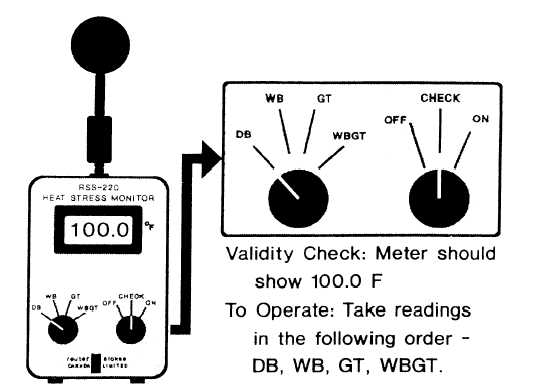| |
Figure 5-2.—Heat stress monitor.
Heat stress can occur when personnel are wearing
layered, impermeable, or impervious clothing such as
fire-fighting; chemical, biological, and radiological
(CBR); or hazardous material protective clothing. The
presence of atmospheric contaminants such as
combustion gases or fuel vapors may also contribute to
heat stress. Heavy exertion, such as that involved in
athletics, in hot, humid weather also leads to heat stress.
Other conditions that lead to heat stress include reduced
physical stamina because of illness; lack of sleep; or the
use of medication, drugs, or alcohol.
Heat stress ashore is of concern when personnel are
required to work or drill in hot weather. Many bases
raise colored flags to indicate the level of caution
required because of the heat.
Preventing Heat Stress
You can prevent heat stress injury as follows:
1. By detecting, correcting, and controlling the
conditions that cause heat stress
2.
3.
4.
By using dry bulb thermometers to monitor
locations in which heat stress conditions maybe
present
By restricting personnel exposure to heat stress
conditions as the result of heat stress surveys
conducted to determine safe stay times
By recognizing heat stress symptoms in yourself
or in shipmates and acting to prevent or
minimize the effects of heat injury
Since dry bulb temperature, humidity, and radiant
heat all affect the body and may cause heat stress, you
must take all three into account. Conducting a heat stress
survey with a wet bulb globe temperature (WBGT)
meter (fig. 5-2) provides a calculated WBGT index. You
can use this index with a graph of physiological heat
exposure limits (PHEL) curves to determine stay times
in that environment. Since we cannot reduce the heat,
we must reduce the exposure time of the personnel
working in that heat. Stay times also take into account
the work load of the individual.
You can find further information and guidance on
the Navy Heat Stress Control and Prevention Program
in OPNAVINST 5100.20C, Shipboard Heat Stress
Control and Personnel Protection; OPNAVINST
5-6
|

